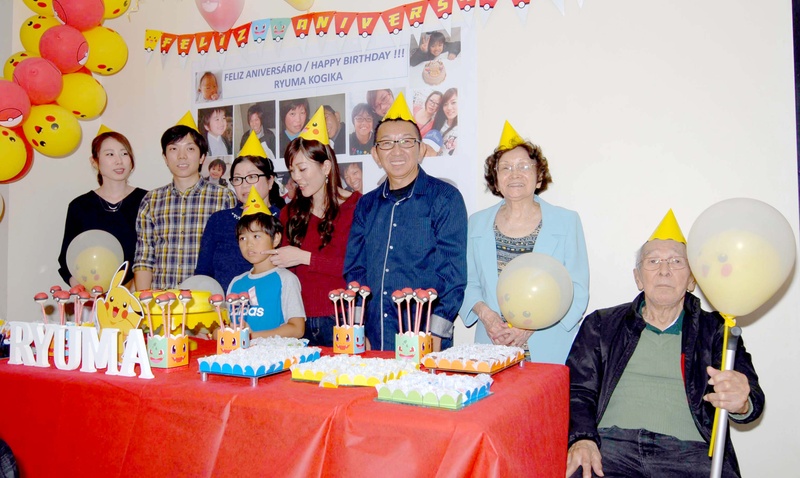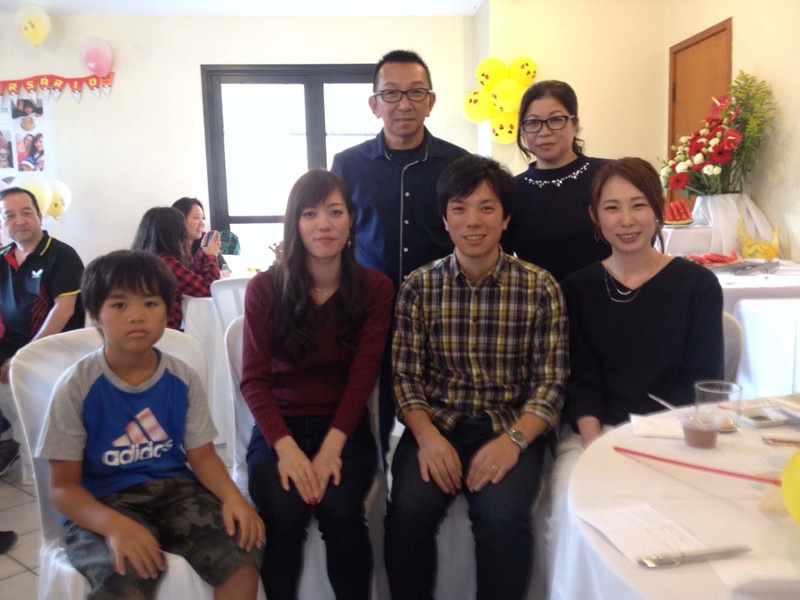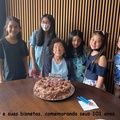The story of Clayyton, Sansei, now 28 years old, is yet another example of young Brazilians who left Brazil in the 80s and 90s, heading to the Japanese archipelago in hopes of a better life.
Unlike their grandparents who arrived in our country at the beginning of the 20th century, as eager immigrants looking for new opportunities and “riches” as the Japanese authorities proclaimed at that time, the “dekasseguis” here had to make the opposite journey, seeking Japan as a final alternative to the lack of employment in Brazil, imagining a temporary stay of 3 to 5 years, but for many it ended up becoming permanent, without a return ticket.
The tricks of fate meant that the two migratory phenomena happened almost a century later between one event and another, but with similar objectives. In the case of our grandparents, for reasons of survival, they had to leave Japan, which since the mid-19th century was going through a serious crisis caused by overpopulation, land scarcity and social tension. The government was forced to adopt an emigration policy, encouraging the population to seek new lands and “riches” in other countries. This is how entire families, including those with small children, began arriving on Brazilian lands since 1908.
Following the opposite path of the immigrants from the Kasato Maru , Brazilian Nikkei, in the 80s and 90s, began to look for Japan as a refuge and a lifeline, seeking alternatives to the high unemployment that was raging in Brazil due to the serious economic crisis that had hit the country. . Hundreds of Brazilian Nikkei of different ages, with varied educational and cultural backgrounds and with different degrees of professional experience, packed their bags and, with their families in tow, landed in Japan in search of work. This migration was facilitated by the Reform of the Immigrant and Refugee Law of 1990 adopted by the Japanese Government, through which the grandchildren of immigrants and their spouses also became entitled to a long-stay visa in Japan, significantly increasing the number of Japanese people. Brazilians who sought safe shade in the country of the rising sun.
Among these was Akira Kogika, then 30 years old, married and with young children. In 1995, with the job market increasingly restrictive and demanding in Brazil and given the encouraging information from relatives and colleagues who had migrated to Japan, Akira felt encouraged to try a life there, taking his entire family with him, along with him. with dreams and hopes for a better life. His wife Ivete and two young children, Clayyton, 6 years old and Miwa, 4 years old, went along, with faith and courage.
Arriving in Japan, they settled in the city of Hamamatsu, Shizuoka province, a region that already had a considerable contingent of “dekaseguis”, with the intention of staying for a few years, long enough to save up some savings that could leverage some business or acquisition. of property, when they returned to Brazil. It was at a time when there were not the facilities that are found today, such as stores with interpreters, Brazilian products in many cities and better working conditions. People worked a lot at that time, averaging 15 to 16 hours a day for 6 days a week. The Japanese economy itself was going through a better phase.
The first years were difficult for the family, as they were for almost all the Brazilians there. It is often said that Japan is a wonderful country, the best in the world to live in, where everything works impeccably, but it is the worst to get used to, to adapt to. They thought about giving up several times, coexistence and relationship crises occurred, probably generated by the stress and adverse conditions they faced, from heavy and exhausting work to the lack of comfort and leisure, not to mention the enormous longing for their parents, relatives and friends, even even the Brazil they left, with all its crises and problems. What a caipirinha, a barbecue, a feijoada, even that “naked” one on the weekend! But the determination and samurai spirit of the ancestors spoke louder at that time. They weren't going to give up!
Their children's education has always been one of the biggest concerns of the “dekasseguis” when they decided to live in Japan. They didn't know for sure whether to enroll their children in Japanese public schools or private Brazilian schools. It was a difficult decision to make, which involved other complicated variables, but which represented a lot for the child's future.
And for Akira and Ivete it was no different. The children were at that important stage of literacy. Even though they were not sure whether their stay in Japan would be temporary or permanent, they prudently decided to enroll them in a Japanese public school, aware that the children would inevitably encounter difficulties in adapting. But, on the other hand, they believed that they could interact with their Japanese classmates from an early age, absorbing the uses and customs and, mainly, the language and the Japanese education system, giving them more chances to continue their studies and compete under better conditions in the market. of work. They would grow up as Japanese; This was always Akira and Ivete's intention.
It is known that in public schools the problem of assimilation and acceptance of the Japanese education system has always been very serious. Japanese schools tend to demand a lot from children and their guardians. There are meetings, chores, parties, trips, visits from the teacher at home, from parents to the school, even preparing the lunch box, the bento . You do not choose a school of your own free will, you are simply obliged to enroll your child in the school closest to home. And the children already started the school year with many problems: they spoke in very poor Portuguese or Japanese, which made it difficult for them to adapt and, consequently, their interest in studies. To make matters worse, communication between parents and teachers, essential in any educational system, was complicated and almost non-existent, because parents generally did not speak Japanese.
In this case that we are now discussing, the parents' preference for public schools made it clear that the intention was for the children to grow up within the Japanese culture, with all the difficulties they might face.
Thus, with the support of parents and committed teachers, it can be said that Clayyton and Miwa adapted well and had commendable academic development, with the advantage of not having lost contact with the Portuguese language, that living with their parents , using only Portuguese at home, can provide. Even at the most advanced stage of the system, in kotogakko or high school, where the children were already fluent in Japanese, parents insisted on using Portuguese as their home language, so that they would not forget their native language.
However, it should be noted that both Clayyton and Miwa did not have a smooth adaptation at the beginning of their school years, in shogakko . The lack of minimal knowledge of the Japanese language, the diverse cultural environment, the observation of ijime to a certain degree on the part of classmates, among other factors, caused a state of almost panic in the children, to the point that Clayyton could not contain his crying. I despair often, in the classroom or at home. However, he was lucky during that complicated phase, to count on the support and affection of his teacher who, realizing his dedication and particular interest in Japanese culture, treated him with special attention, giving him extra-class support and teaching, even outside the classroom. normal schedule. In such a way that Clayyton, with desire and intelligence, became enthusiastic about his studies, to the point of presenting a commendable performance, graduating with distinction in chugakko and kotogakko , enabling him to participate in the highly competitive selection exams for the University.
Unfortunately, the majority of young children of “dekasseguis” end up giving up at this stage, upon completing the kotogakko , given the high demand for knowledge of the Japanese language that the candidate must have to take the selection tests. Clayyton, then 18 years old, applied for a place on the mechanical engineering course at Hamamatsu Gakuin University. He passed and due to the good position he achieved in the entrance exams, he won a scholarship offered by the Municipality itself. A great achievement. After 4 years of course, he graduated brilliantly, to the point of being chosen by his colleagues as Class Speaker at the graduation ceremony.
On that occasion, upon receiving the video of the graduation ceremony, the grandparents, uncles and cousins here in Brazil were moved, proud, of that boy who left Brazil at just 6 years old, barely mastered Portuguese and knew almost nothing about Japanese, but thanks Thanks to his dedication and competence and the support of his parents, he became a WINNER in the country of his ancestors. He was now a mechanical engineer graduated from a prestigious Japanese university!
Currently, Clayyton is a permanent employee of a renowned auto parts industry, a partner of the large car company Honda. He got married 3 years ago to his schoolmate Kasumi, who graduated in Nursing and works in a large hospital in Hamamatsu. They form a beautiful and promising couple, with all their merits! And, despite being so young, they already live in their own home, another significant feat in Japan, where any property costs a small fortune.
Sister Miwa studied at Kotogakko , practiced Kendo when she was a student, worked as an interpreter ( tsuyaku ) for the “dekasseguis” and currently works in the administrative area of a metallurgical company. He has a son, Ryuma, who just turned 9 years old.
A few days ago, for the first time after the risky decision to live in Japan, exactly 22 years later, the whole family returned to Brazil to see their grandparents, sister, uncles, cousins and other relatives. A big party was thrown for them, as if it were a formal presentation of the new family to their relatives in Brazil. It was an unforgettable celebration. And, as a worthy end to the event, Clayyton made a point of giving a thank you speech in impeccable Japanese, leading the guests to emotion and pride for that “boy” who had left Brazil so young, without saying anything about “nihongô” and without the slightest idea of what life had in store for him.
Married to a Japanese woman and faced with his parents' decision to definitively opt to remain in Japan, Clayyton decided on Japanese nationality, with the certainty of a citizen fully convinced of his identity and perfectly integrated into Japanese society, like his own. feature cannot be denied. He has the look and feel of an Issei !
This is the story of a young man who chased his dream and managed to make it a reality.
© 2017 Katsuo Higuchi







